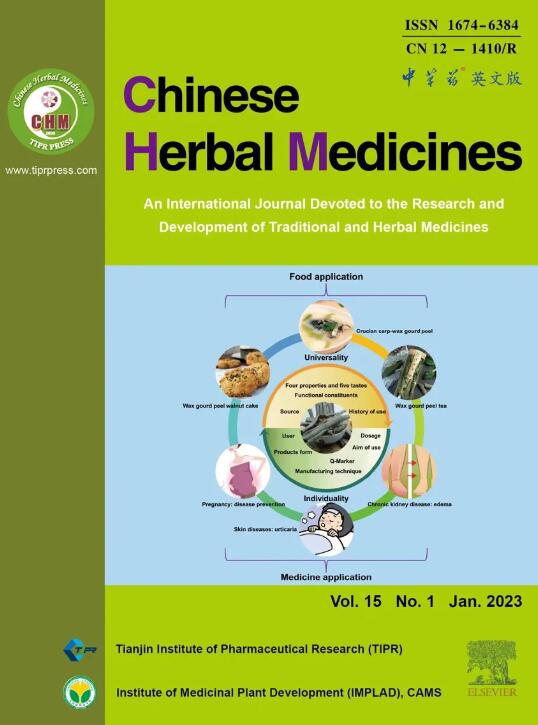通过组学和机器学习建模揭示灵芝的生物活性潜力和生产
IF 4.7
4区 医学
Q1 CHEMISTRY, MEDICINAL
引用次数: 0
摘要
灵芝(Ganoderma lucidum)是一种以生产多种化合物而闻名的药用蘑菇,具有抗炎、抗氧化、免疫调节和抗癌等药理作用。因此,由于其重要的药用特性,它被认为是制药和营养保健行业的一种有价值的物种。近年来,基因组学、转录组学、蛋白质组学和代谢组学等组学技术的发展大大提高了我们对灵芝生物活性的认识。本文综述了分子育种技术在食品、制药和工业等领域提高灵芝产量和品质的应用。本文讨论了当代组学技术的研究现状,并强调了未来的研究方向,这些方向可能会增加生物活性化合物的生产,以发挥其治疗潜力。此外,计算研究的预测方法最近成为研究灵芝生物活性成分的有效工具,为了解其生物活性、相互作用和可能的治疗用途提供了有组织和具有成本效益的策略。组学和机器学习技术可以用于识别候选药物应用,并提高灵芝中生物活性化合物的生产。通过将生物活性化合物的计算研究与生物活性化合物的非破坏性预测机器学习模型相结合,可以简化生物活性化合物的量化和生产。协同作用下,这些技术有可能成为未来预测生物活性成分的有前途的方法,而不会损害真菌有机体的完整性。本文章由计算机程序翻译,如有差异,请以英文原文为准。
Unraveling bioactive potential and production in Ganoderma lucidum through omics and machine learning modeling
Ganoderma lucidum, a medicinal mushroom renowned for its production of a diverse array of compounds, accounts for the pharmacological effects including anti-inflammatory, antioxidant, immunomodulatory, and anticancer characteristics. Thus, it is recognized as a valuable species of interest in the pharmaceutical and nutraceutical industries due to its important medicinal properties. Recent advances in omics technologies such as genomes, transcriptomics, proteomics, and metabolomics have considerably increased our understanding of the bioactives in G. lucidum. This review explores the application of molecular breeding techniques to enhance both the yield and quality of G. lucidum across the food, pharmaceutical, and industrial sectors. The article discusses the current state of research on the use of contemporary omics technologies which studies and highlights future research directions that may increase the production of bioactive compounds for their therapeutic potential. Additionally, predictive methods with computational studies have recently emerged as effective tools for investigating bioactive constituents in G. lucidum, providing an organized and cost-effective strategy for understanding their bioactivity, interactions, and possible therapeutic uses. Omics and machine learning techniques can be applied to identify the candidates for pharmaceutical applications and to enhance the production of bioactive compounds in G. lucidum. The quantification and production of the bioactive compounds can be streamlined by the integrating computational study of bioactive compounds with non-destructive predictive machine learning models of the same. Synergistically, these techniques have the potential to be a promising approach for the future prediction of the bioactive constituents, without compromising the integrity of the fungal organism.
求助全文
通过发布文献求助,成功后即可免费获取论文全文。
去求助
来源期刊

Chinese Herbal Medicines
CHEMISTRY, MEDICINAL-
CiteScore
4.40
自引率
5.30%
发文量
629
审稿时长
10 weeks
期刊介绍:
Chinese Herbal Medicines is intended to disseminate the latest developments and research progress in traditional and herbal medical sciences to researchers, practitioners, academics and administrators worldwide in the field of traditional and herbal medicines. The journal's international coverage ensures that research and progress from all regions of the world are widely included.
CHM is a core journal of Chinese science and technology. The journal entered into the ESCI database in 2017, and then was included in PMC, Scopus and other important international search systems. In 2019, CHM was successfully selected for the “China Science and Technology Journal Excellence Action Plan” project, which has markedly improved its international influence and industry popularity. CHM obtained the first impact factor of 3.8 in Journal Citation Reports (JCR) in 2023.
 求助内容:
求助内容: 应助结果提醒方式:
应助结果提醒方式:


